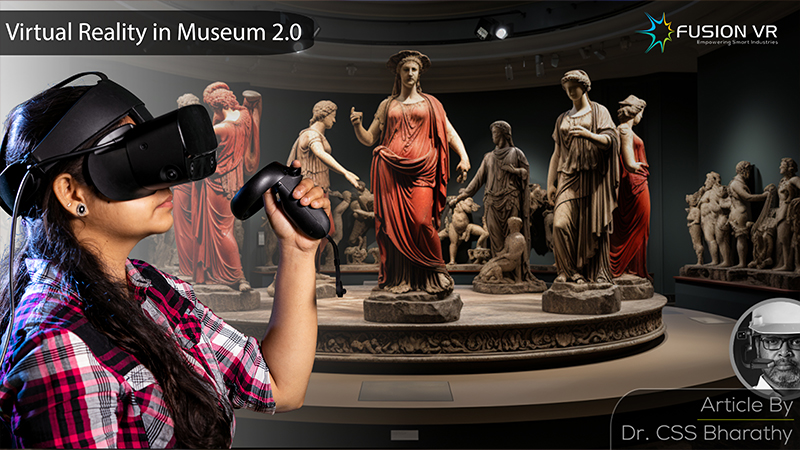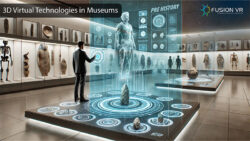Virtual Reality (VR) technology is now being adopted everywhere to deliver unique experiences, and museums are no exception. It is considered a truly transformative tool that is making us rethink how we manage overall cultural engagement in the society we live in. VR brings together art and technology to create unique immersive cultural experiences for its users. Users have affirmed that they are taken over by the immersive experience, often forgetting that the technology is in play and feeling captured by the cultural experience it delivers.
VR is a truly wonderful immersive medium that provides museum visitors with an unforgettable opportunity to do what they often find difficult to experience in the real world, like go on an adventure to explore distant lands or travel back in time to witness a different world etc. VR is bringing unique cultural experiences to your doorstep in ways unimaginable a decade ago.
Museums enjoy a great advantage in their capability to take people back in time to view the awesome past and present-day accomplishments of the human race and the treasures of this wonderful planet. Virtual reality takes advantage of advances in optics, computing and brain science to deliver what is truly magical. Users need to wear headsets that contain sophisticated lenses, high-resolution displays and advanced programming to provide a unique visual experience.
The headset completely covers the eyes, isolating the user from their immediate surroundings and thrusting themselves into a new virtual world. This can be the natural world that they haven’t seen or a completely recreated one. Hand controllers are provided to enable the visitor to navigate in all directions.
Using a VR museum exhibit, a visitor can scale Everest, enter the Taj Mahal, walk through the caves of Ajanta and Ellora, navigate the Grand Canyon and deep dive to explore the Titanic. These are otherwise near-impossible experiences that are a testament to redefining the cultural experience of an ordinary citizen using virtual reality technology.
VR provides complete interaction with the displays depicting valuable museum artefacts. Typically, museum artefacts are kept in safe environments that prevent close and personal access. This risk is completely non-existent in the VR museum experience.
These valuable artefacts are hyper-realistic and allow the visitor to get up close, rotate and manipulate them in all possible ways. This enables the visitor to develop a deeper cultural understanding and appreciation of its value and significance.
Virtual Reality museums and VR displays are enabling access to all sections of society. Technology has flattened the field and democratised access to everyone. Virtual reality headsets have also become increasingly affordable due to recent advances and increased investment.
Moreover, this has enabled people to access and appreciate far-flung cultures. This has expanded the reach of museums to provide cultural experiences to larger numbers of people than ever before in the history of human civilisation.
Furthermore, VR technology has enabled museums to try innovative storytelling techniques for high-quality museum experiences. Traditional museums are blending virtual reality experiences, enabling visitors to experience the best of both worlds. Your typical city museum typically has text panels, static displays and, more recently, audio guides to convey information.
This becomes uninteresting and disengaging to visitors in a short while. VR, however, is a platform for dynamic storytelling using immersive narratives and hyper-realistic virtual environments. Museums create interactive experiences where all visitors are transformed into active participants in historical events or artistic engagements. VR is therefore enabling engagement, sparking curiosity and encouraging deeper cultural exploration.
Fusion VR has engaged with governments and private entities and delivered projects of VR experience centres and interactive museums. In addition to the above, we also engage with the business community to develop corporate experience centres that capture the impact of industry and its patronage for culture. We encourage you to check out our projects and offerings on our website.
In conclusion, Virtual Reality is redefining cultural engagement with the application of unique technologies in museums and corporate experience centres. This has delivered immersive experiences, interactivity, accessibility, and innovative storytelling. By implementing this technology, museums will overcome physical limitations and economic constraints and democratise access to every nation’s cultural heritage. Museums are blessed with the unique opportunity to transform people and the cultural environment by using virtual reality in museums to support efforts towards preserving and celebrating our collective cultural legacy.





